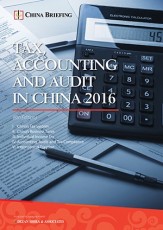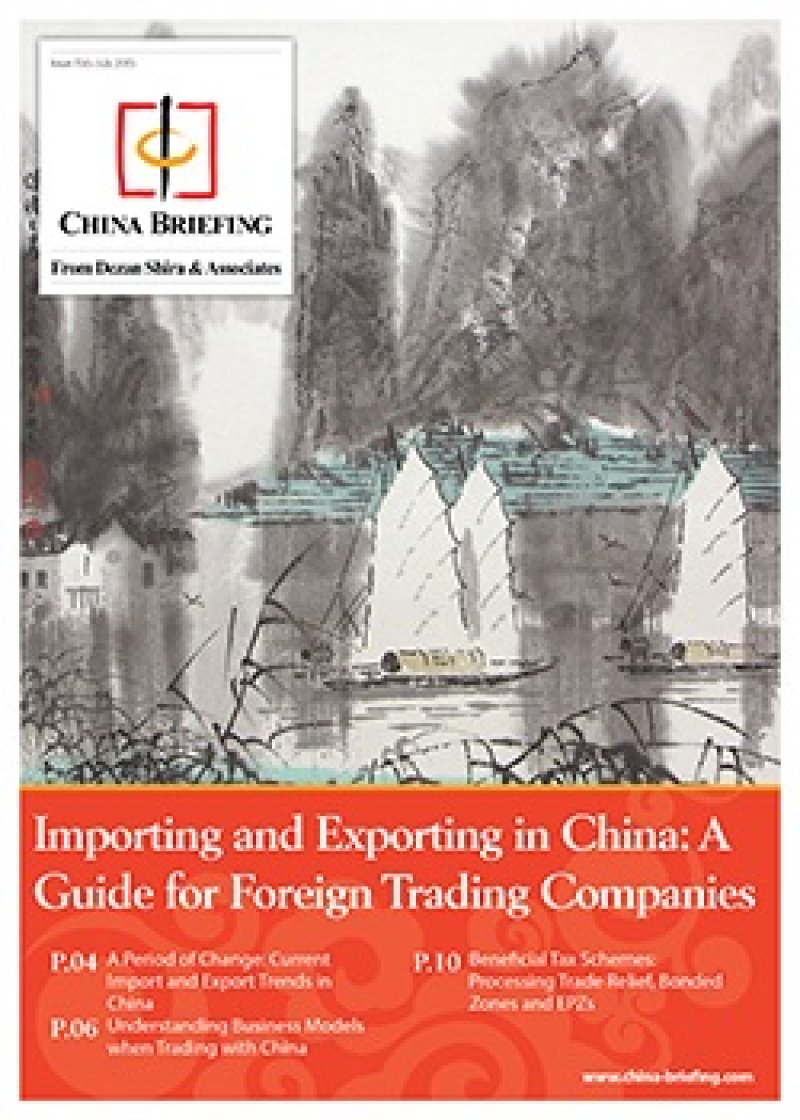China Introduces Wide-Sweeping New Transfer Pricing Rules
By Shirley Chu
Manager, Corporate Accounting Services
Dezan Shira & Associates, Dalian
On June 29, China’s State Administration of Taxation (SAT) issued the “Announcement on the Administration of Related-party Transactions and Contemporaneous Documentation (SAT Announcement [2016] No. 42)”, which introduces a three-tiered documentation framework that will replace its current transfer pricing documentation rules.
The Announcement was released following the opinion-seeking draft publicized by the tax bureau in September 2015, and is largely consistent with the BEPS (Base Erosion and Profit Shifting) project launched by the Organization for Economic Cooperation and Development (OECD). Compared to the 2015 Draft – which has been discussed in our previous article – the Announcement revised some terms and further clarified the requirements for reporting companies, as well as the information they need to submit. Below, we provide a brief summary of the key information taken from the Announcement, and offer suggestions for multinational companies seeking to repatriate their profits from China to their headquarters.
Related-Party Transaction Reporting
China’s Corporate Income Tax Law and the Law on the Administration of Tax Collection stipulates that, in cases of related-party transactions, both Chinese resident enterprises who have sound accounting systems and non-resident enterprises operating and paying income taxes in China must make a joint declaration of their business activities when filing the annual income tax declaration form to China’s tax authorities.
According to the new transfer pricing regulations, the number of related-party filing forms has been increased from nine to 22, including information disclosures with respect to the Country-by-Country (CBC) Report. The filing report needs to contain the following:
- Full information regarding the reporting company, covering basic company information, internal department information, employee headcount information, senior management information, and shareholder information, etc.;
- Detailed information on both sides’ financial asset transactions, equity investments, and cost sharing agreements;
- Information of the overseas related-party, including registered business address, actual operation address, business scope, applicable tax rate, and any relevant income tax incentives;
- Current financial situation of the reporting company, including outbound and inbound related and non-related party transactions.
Additionally, the CBC Report form needs to be filed in accordance with the information disclosure requirement stipulated by Action 13 of BEPS. CBC Reports are required for the following taxpayers, who must submit them in both English and Chinese:
- The ultimate holding enterprise of a multinational corporation with consolidation revenue for the previous accounting year exceeding RMB 5.5 billion
- Enterprises which have been designated as the reporting party of the Country-by-Country Report. This requirement is much similar to Action 13 of OECD BEPS Actions.
![]() RELATED: Business Advisory Services from Dezan Shira & Associates
RELATED: Business Advisory Services from Dezan Shira & Associates
Contemporaneous Documentation
Enterprises are required to finish preparing their contemporaneous documentation before May 31 of the following year, and must submit documentation within 20 days of a request being made by the tax authorities. Please note that all documentation needs to be prepared in Chinese and sealed and signed by the company’s legal representative. Given that the deadline is earlier than the BEPS recommendation of December 31, the draft allows Chinese filers to apply for an extension.
The regulations’ three-tiered framework for contemporaneous documentation consists of master files, local files, and special files:
- Master files are applicable for enterprises that incur cross-border related party transaction in the year, and for the ultimate holding company which consolidates the enterprise’s financial statements. They also apply to annual related party transactions with a total amount exceeding RMB 1 billion.
- Local file apply to transactions where the amount of tangible goods ownership (computed according to the Customs declaration prices for imports and exports) exceeds RMB 200 million; to financial asset transactions that exceed RMB 100 million; to transactions where the amount of intangible assets ownership exceeds RMB 100 million; and to the total amount of other types of related party transactions that exceed RMB 40 million.
- The regulations require companies to submit a so-called Special File for related-party service transactions, cost sharing agreements, and thin capitalization.
Enterprises which have entered an advance pricing arrangement (“APA”) do not need to prepare local or special files, and the related party transaction amount covered in the APA is not included in the related party transaction amount.
Extra Considerations for Local Files
There are a number of other pieces of information that must be disclosed as part of the local file, the most important being:
- Value-chain analysis: value-chain analysis requires a disclosure of information regarding profit attribution of the global value-chain inside the group. It places a high demand on taxpayers in terms of information collection, data analysis, and disclosure formation.
- Outbound investments: a detailed disclosure of the outbound investment figures.
- Disclosure of related party equity transfer information: a detailed disclosure of information regarding related party equity transfers, including equity transfer prices, background, terms of payment, and equity transfer gains. A due diligence report and asset valuation report regarding the equity transfer must also be included.
Looking Forward
The new regulations form a part of China’s movement towards a harsher business environment, and also the implementation of stricter supervision on intercompany/related-party transactions. The promulgation of Announcement No.42 further clarifies the importance of related party filing and contemporaneous documentation. The instructions in the Announcement provide more comprehensive and systematic rules in the anti-tax avoidance work of China’s tax authorities. The new, more detailed regulations will greatly increase the compliance workload of enterprises, and will pose new demands and challenges for taxpayers.
Considering the changes discussed above, we suggest that taxpayers take the following measures as soon as possible:
- Collect relevant information according to the new related party filing requirements and run a trial fill-out of the forms;
- Re-evaluate and review related party transactions according to the new requirements for contemporaneous documentation;
- Map out the difference between the information required in the previous and new contemporaneous documentation, and start to bridge the gap.
|
Asia Briefing Ltd. is a subsidiary of Dezan Shira & Associates. Dezan Shira is a specialist foreign direct investment practice, providing corporate establishment, business advisory, tax advisory and compliance, accounting, payroll, due diligence and financial review services to multinationals investing in China, Hong Kong, India, Vietnam, Singapore and the rest of ASEAN. For further information, please email china@dezshira.com or visit www.dezshira.com. Stay up to date with the latest business and investment trends in Asia by subscribing to our complimentary update service featuring news, commentary and regulatory insight. |

 Tax, Accounting, and Audit in China 2016
Tax, Accounting, and Audit in China 2016
This edition of Tax, Accounting, and Audit in China, updated for 2016, offers a comprehensive overview of the major taxes that foreign investors are likely to encounter when establishing or operating a business in China, as well as other tax-relevant obligations. This concise, detailed, yet pragmatic guide is ideal for CFOs, compliance officers and heads of accounting who must navigate the complex tax and accounting landscape in China in order to effectively manage and strategically plan their China-based operations.
 Annual Audit and Compliance in China 2016
Annual Audit and Compliance in China 2016
In this issue of China Briefing, we provide a comprehensive analysis of the various annual compliance procedures that foreign invested enterprises in China will have to follow, including wholly-foreign owned enterprises, joint ventures, foreign-invested commercial enterprises, and representative offices. We include a step-by-step guide to these procedures, list out the annual compliance timeline, detail the latest changes to China’s standards, and finally explain why China’s audit should be started as early as possible.
Importing and Exporting in China: a Guide for Trading Companies
In this issue of China Briefing, we discuss the latest import and export trends in China, and analyze the ways in which a foreign company in China can properly prepare for the import/export process. With import taxes and duties adding a significant cost burden, we explain how this system works in China, and highlight some of the tax incentives that the Chinese government has put in place to help stimulate trade.
- Previous Article Avoiding Labor Disputes in China: The Importance of the Staff Handbook
- Next Article An Introduction to China’s M&A Market










